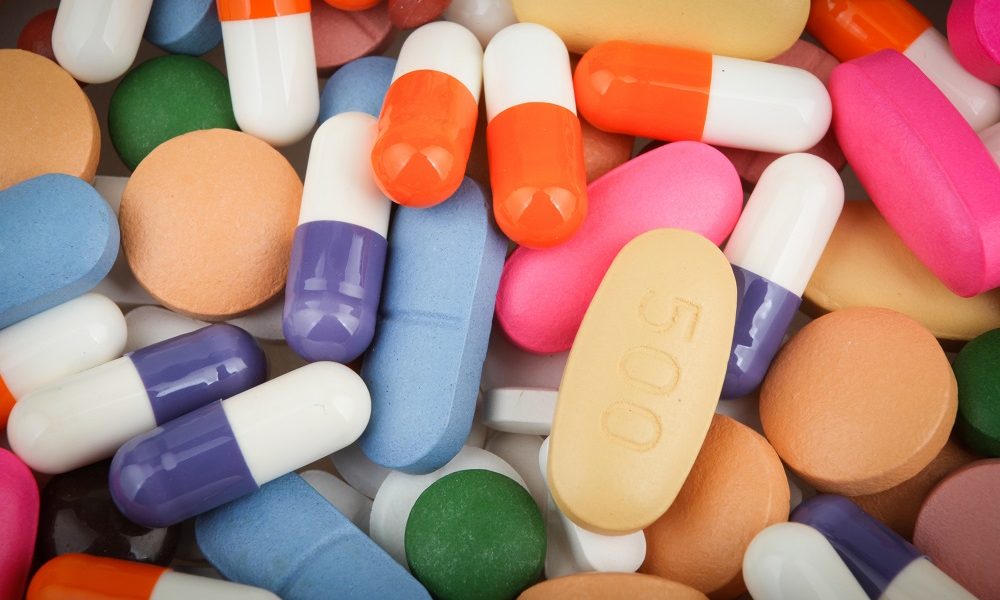
Spread the love
Certain types of oral antibiotics and high-oxalate foods can contribute to the development of kidney stones — especially in children — and can even lead to fatal health conditions. Here are some tips to lower your risk.
Between 1997 and 2012, the annual incidence of kidney stone disease rose by 16%. The highest increase was seen in 15- to 19-year-olds, among whom the incidence rate increased 26% per five years.
Five classes of oral antibiotics have been identified as risk factors for kidney stones: broad-spectrum penicillins, fluoroquinolones, nitrofurantoin, cephalosporins and sulfas.
The association is most pronounced among younger children, and remains statistically significant for up to five years after exposure, except for broad-spectrum penicillin.
Previous studies have found an association between oral antibiotics and inflammatory bowel disease (IBD) and colorectal cancer, likely due to disruption of the gut microbiome.
Fluoroquinolones, which are frequently prescribed for upper respiratory infections and urinary tract infections (UTIs) have been linked to an increased risk for aortic dissection (tears in the aorta), which can be fatal.
READ ALSO: Habits to prevent kidney failure
According to research published in the Journal of the American Society of Nephrology (JASN) in 2018, oral antibiotics are a risk factor for kidney stones.
Health records for 13 million children and adults in the U.K. were reviewed, showing that exposure to five classes of oral antibiotics was associated with kidney stones within three to 12 months post-use.
The association was most pronounced among younger children and remained statistically significant for up to five years after exposure, with the exception of broad-spectrum penicillin.
The authors concluded that: “Oral antibiotics are associated with increased odds of nephrolithiasis [kidney stones], with the greatest odds for recent exposure and exposure at younger age. These results have implications for disease pathogenesis and the rising incidence of nephrolithiasis, particularly among children.”
As reported by NBC News on July 8, data show kidney stones are “now occurring in younger people, particularly among teenage girls,” and “diets high in ultra processed foods” and “increased use of antibiotics early in life” are thought to be among the key contributors to this trend.
According to research published in the Clinical Journal of the American Society of Nephrology in 2016, between 1997 and 2012, the mean annual incidence of kidney stone disease across age groups increased by 1% annually, from 206 to 239 per 100,000 persons.
The highest increase was seen in 15- to 19-year-olds, among whom the incidence rate increased 26% per 5 years. Within this age group, the incidence was 52% higher among girls. In men, kidney stones became more common after age 25.
READ ALSO: Kidney disease remains major cause of mortality in Africa, Middle East—Experts
“These changes in incidence resulted in doubling of the risk of nephrolithiasis during childhood and a 45% increase in the lifetime risk of nephrolithiasis for women over the study period.”
Adults who had been prescribed antibiotics one to two years prior to IBD diagnosis had the highest risk. And, while all classes of antibiotics were associated with increased IBD risk, fluoroquinolones, which include brand names Cipro and Levaquin, had the strongest association.
The review by the FDA found fluoroquinolone antibiotics increase the risk of rupture following an aortic aneurysm (i.e., enlargement of the aorta to more than 1.5 times its normal size).
“The researchers compared the amount of antibiotics the patients had taken at least six months before being diagnosed with cancer, to the amount of antibiotics taken by a group of about 86,000 healthy people.
According to research published in the Cleveland Clinic Journal of Medicine in 2018, Americans have already lost half of their microbial diversity, which is why the risks of antibiotics must be carefully weighed against the benefits prior to use.
Oxalate (oxalic acid with calcium attached) accounts for about 80% of all kidney stones, and high-oxalate foods such as spinach, swiss chard and beet greens are touted as “superfoods.”
Another high-oxalate food is almonds, which you can easily “overdose” on if you’re eating bread made with almond flour or drinking almond milk, or if you’re on a keto or paleo diet, as they both tend to rely heavily on almonds.
Other foods high in oxalate include peanut butter, wheat bran, potatoes, rice bran and dark chocolate.
You may be interested

AFCON 2025Q: Benin Republic Hit By Another Injury Blow
Webby - November 13, 2024Benin Republic will be without two more players for their 2025 Africa Cup of Nations qualifying matches against Nigeria and…

Dier Set To Depart Bayern In Summer
Webby - November 13, 2024Eric Dier is likely to leave Bayern Munich at the end of the season according to transfer expert and Sky…

‘I Want More’ — Dessers Declares After Scoring 10th Goal For Rangers
Webby - November 12, 2024Cyriel Dessers is eager to score more goals for Scottish Premiership club Rangers.The striker has been in impressive form for…





















![American Pastor, David Wilson Seen Eating The Box Of Woman Who Isn’t His Wife [Video]](https://onlinenigeria.com/wp-content/uploads/2019/10/american-pastor-david-wilson-seen-eating-the-box-of-woman-who-isnt-his-wife-video-150x150.jpg)









